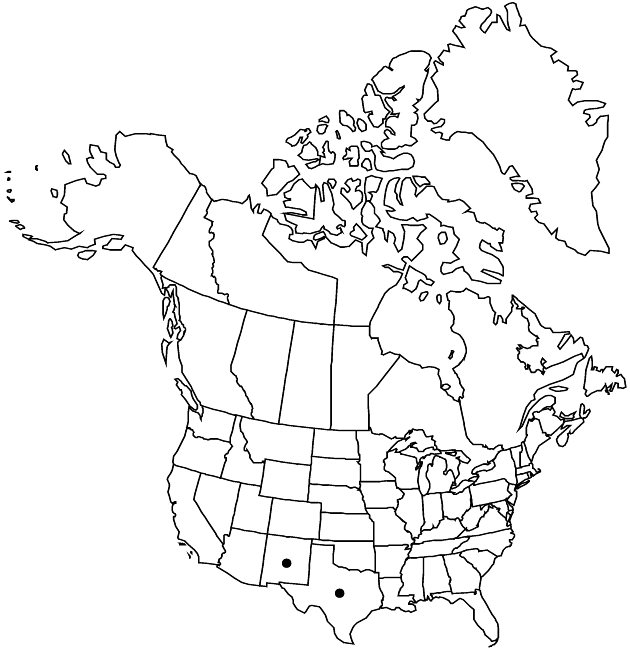Xanthisma gypsophilum
Sida 20: 1404. 2003.
Subshrubs, 15–50 cm; caudices branched, taproots 4–15+ cm. Stems 5–10+, often branched in distal 1/3, moderately stout to stout, not wiry, hispid or minutely stipitate-glandular. Leaves: basal withering by flowering; cauline evenly spaced, blades narrowly to broadly oblong to obovate, 5–60 × 2–10 mm, gradually reduced distally, margins unevenly, often coarsely serrate, teeth 5–14 per side, each with white bristle 0.5–2 mm, faces hispidulous and often stipitate-glandular. Peduncles moderately to densely stipitate-glandular, usually ebracteate. Involucres depressed-hemispheric, 0.4–0.7 × 0.9–1.5 cm. Phyllaries in 4–6 series, broadly linear to lanceolate, 1.5–7 mm, apices obtuse to short-acuminate, tipped by white seta, faces densely stipitate-glandular. Ray-florets 12–28; corollas usually white, often pink or purple-tinged abaxially, rarely purple, tubes 1.5–3.2 mm, laminae 8–18.5 × 1.9–4.7 mm. Disc-florets 50–120+; corollas 4–6.1 mm. Cypselae oblong to obovoid, 1.5–2.6 mm, 8–14-ribbed, faces moderately to densely whitish to tawny hairy; pappi whitish to tawny, 1.3–5 mm, a few abaxial bristles to 1/3 of longest. 2n = 8.
Phenology: Flowering spring–fall.
Habitat: Gypseous, calcareous, or sandy plains, badlands, outcrops
Elevation: 900–2400 m
Distribution

N.Mex., Tex., Mexico (Chihuahua), Mexico (Coahuila), Mexico (Durango), Mexico (San Luis Potosí)
Discussion
Selected References
None.